
Обеспечение финансовой стабильности экономики на основе регулирования волатильности денежных потоков
Larionov A., М. : Издательский дом "Научная библиотека", 2024
Монография раскрывает методический подход к регулированию волатильности денежных потоков для обеспечения финансовой стабильности экономики. Волатильность денежных потоков является явлением, которое должно оцениваться с помощью различных параметров, включая объем, время, форму совершения платежа. Оценка параметров волатильности денежных потоков позволяет создать систему оперативных индикаторов экономики, применение которых актуально в условиях увеличения количества ситуаций «глубокой» неопределенности. Для организации ...
Added: September 1, 2024

Bochaver A. A., Хломов К. Д., Андрианова Р. А. et al., М. : Институт изучения детства, семьи и воспитания Российской академии образования, 2022
В монографии представлены результаты научного исследования в области возрастной, юридической, педагогической и клинической психологии и педагогики, направленного на изучение особенностей реализации концепции комплексной профилактики агрессивного поведения в образовательной среде. Полезна административным работникам системы общего и среднего профессионального образования, психологам, педагогам, специалистам по социальной работе, тьюторам, классным руководителям: 1) при составлении методических рекомендаций по обеспечению процесса ...
Added: August 31, 2024
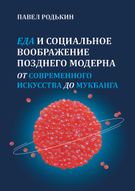
Rodkin P. E., М. : Совпадение, 2024
Food is analyzed as a cultural phenomenon of modern (modern) society and a manifestation of the work of social imagination expressed in the production and construction of sociocultural, communicative and artistic forms of everyday life and media reality. In the structure of representation of the late modern social imagination, food is critically examined through the ...
Added: August 31, 2024

Мытарева А. В., Яр. : РИО ЯГПУ, 2024
Издание представляет собой сборник научных статей, подготовленных участниками международной научно-практической конференции «Русская классическая и неклассическая литература: текст, контекст, рецепция», посвященной памяти доктора филологических наук, профессора, заслуженного деятеля науки Российской Федерации В. В. Агеносова, состоявшейся в Ярославле 23‒25 ноября 2023 г. в ЯГПУ им. К.Д. Ушинского. Материалы сборника отражают круг вопросов, которые стали предметом обсуждения в ...
Added: August 28, 2024

Vishnevskiy K., Gokhberg L., Demidkina O. V. et al., Национальный исследовательский университет "Высшая школа экономики", 2024
В исследовании представлены ключевые направления развития технологий в станкостроении, оценки научно-технологических заделов России и стран-лидеров, а также приоритеты развития отрасли в зарубежных странах. Результаты получены с помощью Системы интеллектуального анализа больших данных iFORA, публикационного и патентного анализа, обзора международных стратегических документов. Доклад представляет интерес для сотрудников профильных органов государственного управления, руководителей предприятий-производителей и компаний-потребителей станкостроительной ...
Added: August 28, 2024

The results of the first Russian sociological study of the state and trends in the development of the infrastructure of extracurricular activities of children (ECA) are presented. For the first time, the criteria of its modern infrastructure are systematically discussed in terms of compliance with educational objectives and needs of participants in educational relations, trends in updating the content ...
Added: August 23, 2024
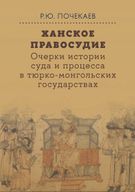
Pochekaev R. Y., М. : Издательский дом НИУ ВШЭ, 2024
The monograph is the first attempt in the legal-historical science to characterize the court and proceedings in the Turkiс-Mongol states on a base of the Mongolian imperial law established by Chinggis Khan at the edge of 12th–13th cc. and later used by his direct descendants and other successors for ages down to the beginning of ...
Added: August 21, 2024
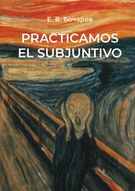
Bocharov Y., Блок-Принт, 2024
A textbook on the subjunctive mood in Spanish. It is intended for students of higher educational institutions who continue to master the subjunctive. The textbook consists of five topics and an appendix in the form of original texts by famous Spanish writers. Convenient navigation is provided by the color scheme - each theme has its ...
Added: August 21, 2024

Korshunov I., Shirkova N., М. : Пашков дом, 2024
В сборнике представлены тексты докладов участников Международной научно-практической конференции «Молодые лидеры библиотечной науки», состоявшейся в Российской государственной библиотеке в сентябре 2022 года.
В конференции приняли участие учёные и студенты: библиотековеды, библиографы, книговеды, аспиранты и молодые сотрудники библиотек, интересующиеся проблемами развития библиотечной науки и научно-методического обеспечения библиотечной практики, из девяти стран СНГ и России.
Цель конференции — выявить актуальные темы научных библиотековедческих, библиографоведческих и книговедческих исследований, а также обсудить лучшие практики участия молодых ...
Added: August 21, 2024

Байрашев В. Р., Исютин-Федотков Д. В., М. : Издательство Проспект, 2024
В работе рассматриваются теоретически и практические аспекты корпоративных закупок. На примерах административной, судебной и прокурорской практики анализируются проблемы применения Федерального закона от 18.07.2011 № 223-ФЗ "О закупках товаров, работ, услуг отдельными видами юридических лиц".
Особое внимание уделяется сложным ситуациям: закупкам в условиях санкций, особенностям проведения неконкурентных закупок, закупкам товаров конкретного товарного знака, применениею приоритета российской продукции и т.п.. ...
Added: August 20, 2024

Recent (2020–2022) studies by researchers in many countries confirm the previously formulated hypothesis that high-growth companies (HGCs) make a significant, if not decisive, contribution to employment growth and economic growth dynamics. A new topic became the study of the behavior of HGCs in crisis situations. Interest in this topic is primarily associated with the COVID-19 ...
Added: August 20, 2024

Alexeevskaya E., Инфотропик Медиа, 2020
В книге предлагается новый взгляд на проектирование государственной программы развития судебной системы России. Новая «дорожная карта» развития судебной системы до 2030 года базируется на сочетании идеи права и математики. Помимо анализа истории суда и судебного управления, их вызовов и концепции устойчивого развития в книге ставятся научные задачи, которые решить с точки зрения права пока невозможно. ...
Added: August 20, 2024

Институт статистических исследований и экономики знаний (ИСИЭЗ) НИУ ВШЭ впервые представляет комплексный обзор ключевых тенденций деятельности предприятий по производству машин и оборудования, включая динамику выпуска станков и робототехнических комплексов, а также ряд важнейших показателей деловой конъюнктуры (индексов), характеризующих развитие отрасли машиностроения, которая играет стратегическую роль в укреплении технологического суверенитета страны.
Цель работы — с опорой на ...
Added: August 20, 2024
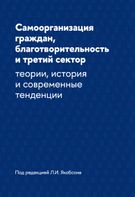
This collective monograph is the first Russian-language publication presenting a complex interdisciplinary study of the nature, characteristics and development trends in the field of altruistic self-organization manifested in charity, volunteering, NGO activities and responsible consumer practices. Thus, the monograph sums up the recent results of theoretical and empirical research accomplished by the Center for Studies ...
Added: August 16, 2024
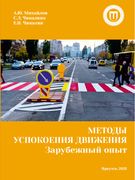
Михайлов А. Ю., Чикалина С. Л., Чикалин Е. Н., Иркутск : Иркутский национальный исследовательский технический университет, 2021
Соответствует требованиям ФГОС ВО по направлению подготовки 23.03.01 – Технология транспортных процессов.
Рассмотрены особенности проектирования и практики применения современных мер по успокоению движения. Главное внимание уделено современным тенденциям проектирования приемов снижения интенсивности и скорости движения автомобильного транспорта в передовых в этом отношении странах – Канады, Великобритании, Германии, США, Франции и ряде других стран.
Предназначено для студентов, изучающих ...
Added: August 16, 2024
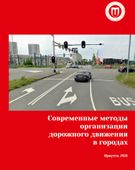
Михайлов А. Ю., Левашев А. Г., Шаров М. И. et al., Иркутск : Иркутский национальный исследовательский технический университет, 2021
Соответствует требованиям ФГОС ВО по специальности «Технология транспортных процессов».
Представлен обзор ряда методов организации дорожного движения (ОДД). Приведены современные требования к контролю доступа, технические и градостроительные нормы, на основе которых осуществляется контроль доступа к проезжим частям улиц и дорог. Детально представлены отличительные особенности ОДД на регулируемых перекрестках. Рассмотрены вопросы организации приоритета общественного пассажирского транспорта.
Предназначено для студентов ...
Added: August 16, 2024
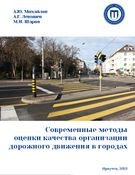
Михайлов А. Ю., Левашев А. Г., Шаров М. И., Иркутск : Иркутский национальный исследовательский технический университет, 2021
Соответствует требованиям ФГОС ВО по специальности «Технология транспортных процессов».
Представлен обзор критериев оценки качества организации дорожного движения (ОДД) и методик оценки качества. Приведены показатели уровня обслуживания для основных элементов улично-дорожной сети (УДС). Детально представлены современные методики оценки качества, организации движения (включая расчет задержек и очередей транспортных средств) на регулируемых и нерегулируемых пересечениях, а также методики оценки ...
Added: August 16, 2024

Михайлов А. Ю., Полтавская Ю. О., Копылова Т. А. et al., Ангарск : Ангарский государственный технический университет, 2021
В учебном пособии дана общая характеристика современных информационных технологий, которые могут быть применимы как в транспортных, так и в градостроительных исследованиях. Рассмотрены инструменты получения информации в режиме реального времени. Описаны геоинформационные технологии, системы спутникового мониторинга и диспетчерского управления перевозками. В заключительных разделах рассмотрены возможности применения беспилотных летательных аппаратов для исследования транспортных систем и градостроительного планирования.
Каждый ...
Added: August 16, 2024
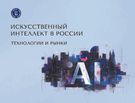
В публикации представлены результаты исследования развития и распространения искусственного интеллекта (ИИ) в России, проведенного Институтом статистических исследований и экономики знаний Национального исследовательского университета "Высшая школа экономики" (ИСИЭЗ НИУ ВШЭ) в 2022–2024 гг. Отражены ключевые тренды развития ИИ, тенденции государственной политики в России и за рубежом, наиболее распространенные практики создания и внедрения технологий ИИ в нашей стране. ...
Added: August 16, 2024

Поспелов П. И., Костин С. В., Немчинов Д. М. et al., М. : ИД "Петрополис", 2022
В монографии изложены современные подходы к решению комплекса вопросов проектирования улиц и дорог в городах и городских округах, в том числе вопросы формирования структуры улично-дорожной сети, проектирования улиц и дорог и их планировочных элементов, проектирования пересечений в одном и разных уровнях (транспортных развязок различной формы и конфигурации), а также представлены материалы по вопросам организации городского ...
Added: August 15, 2024
Wang F., Barajas A., Qeios 2024
Cultural factors play an important role that affects the organizational performance of, especially, the multinational corporations operating across countries and cultures. This study aims to investigate the scientific information related to this research area. The metadata from 856 scientific documents published from 1983 to 2020 in 195 journals indexed on the Web of Science has ...
Added: September 1, 2024
Melentev F. I., Вестник Санкт-Петербургского университета. Серия 2. История 2024 Т. 69 № 3 С. 635-650
The article examines the problem of church-state relations in the Russian Empire in general and the relationship between Grand Dukes Nicholas and Alexander Alexandrovich and Metropolitan Filaret in particular. Being the most famous preacher, he dedicated his speeches to the eldest sons of Emperor Alexander II. The Grand Dukes repeatedly met with one of the ...
Added: August 31, 2024
Dogonasheva O., Радушев Д. О., Гуткин Б. С. et al., Communications in Nonlinear Science and Numerical Simulation 2024 P. 1-20
Methods that distinguish dynamical regimes in networks of active elements make it possible to design the dynamics of models of realistic networks. A particularly salient example of such dynamics is partial synchronization, which may play a pivotal role in emergent behaviors of biological neural networks. Such emergent partial synchronization in structurally homogeneous networks is commonly ...
Added: August 31, 2024
Слобода Н. М., Вестник Томского государственного университета. Философия. Социология. Политология 2024 Т. 79 С. 91-101
The article explicates phenomenological prerequisites for understanding the constitutive social order. The main premise of the work is that the theoretical basis of the constitutive social order, the understanding of which is proposed in Harold Garfinkel’s ethnomethodology, can be analyzed from the positions of phenomenological philosophy. The aim of the article is to analyze the ...
Added: August 31, 2024
As the research focus shifts from the technical to the human side of education, the relevance of measuring socio-psychological traits is growing. Despite proven validity and demand for the Kirton Adaption-Innovation Inventory, or KAI, in international and Russian studies, the scale has not previously been adapted for the Russian-speaking audience. The article describes the results ...
Added: August 31, 2024
Zelentsov M., Информационное общество 2024 Т. 4 С. 121-129
Рассматриваются актуальные теоретические концепции относительно бизнес-моделирования медиа и процессного подхода в медиаменеджменте. Проводится обзор академических исследований как в теории управлении, так и в теории медиа. Актуализируется понятие «бизнес-процесс в СМИ». ...
Added: August 31, 2024
Луховская Ю. О., Российский судья 2024 № 9 С. 24-29
The Article covers the Labor Law institutes of Labor Remuneration, Benefits and Compensations connected to Judges’ professional activity. The Author points to the inconsistency of the existing difference in the salaries of the Chief Justice of the Supreme Court of the Russian Federation and the Chief Justice of the Constitutional Court of the Russian Federation ...
Added: August 30, 2024
Krivokhizh S., Теленьга М., Вестник Санкт-Петербургского университета. Международные отношения 2024 Т. 17 № 2 С. 143-163
Глобализация создала новый медийный ландшафт, в рамках которого реализовывается публичная дипломатия, и поставила перед практиками традиционной публичной дипломатии три проблемы. Во-первых, дипломаты и министерства иностранных дел утратили свою монополию на дипломатическое общение, поскольку неправительственные организации, организации гражданского общества, активисты, блогеры и даже террористические группы получили возможность распространять сообщения публичной дипломатии в интернете. Во-вторых, «новые» участники ...
Added: August 30, 2024
Гулина Е. В., Осокина Д. А., Любич Л. А. et al., Crime, Media, Culture 2024
This article explores Russian young adults's motives for consuming media content related to serial killers. Based on a sociological perspective of consumption, the research integrates concepts such as consumerism and “new hedonism” postulated by Campbell with Giddens’s structuration theory and Goffman’s stigma theory. We argue that consumerists’ motivations and images of serial killers are products ...
Added: August 30, 2024
Stremoukhov D., Вестник Пермского университета. Серия: Политология 2023 Т. 17 № 3 С. 21-32
Рассмотрена возможность применения теорий идентичности и конструктивистского подхода к объ-яснению элитных взаимодействий в недемократических политических режимах на примере открытых конфликтов между российскими региональными бизнесменами и главами субъектов Российской Федера-ции. В условиях слабой защищенности прав собственности инициирование конфликтов с властями зачастую угрожает существованию бизнеса и ставит под вопрос возможность извлечения материаль-ных выгод из занимаемых предпринимателями властных ...
Added: August 29, 2024
Fedulova A., Armeev G., Romanova T. et al., Wiley Interdisciplinary Reviews: Computational Molecular Science 2024 Vol. 14 No. 4 Article e1728
Understanding the function of eukaryotic genomes, including the human genome, is undoubtedly one of the major scientific challenges of the 21st century. The cornerstone of eukaryotic genome organization is nucleosomes—elementary building blocks of chromatin about 10 nm in size that wrap DNA around an octamer of histone proteins. Nucleosomes are integral players in all genomic processes, ...
Added: August 29, 2024
Since its discovery in 2005, the hydrodynamic pilot-wave system has provided a concrete macroscopic realization of wave-particle duality and concomitant classical analogs of a growing number of quantum effects. The question naturally arises as to how closely particle-particle correlations achieved with this classical system can mimic those arising on the quantum scale. We here introduce ...
Added: August 29, 2024
Zykov S. V., Ягант Т. В., Информационно-экономические аспекты стандартизации и технического регулирования 2024 № 2 С. 37-43
Вопрос построения единого информационного пространства является актуальным на протяжении последних 10 лет для
всех отраслей экономики, и наиболее востребован в банках в связи с наличием большого количества требований и их регулярным пополнением как со стороны регулятора – ЦБ РФ, а также из-за налагаемых на кредитные организации санкций.
Целью исследования является разработка когнитивной информационной модели и информационного обеспечения
для ...
Added: August 29, 2024
Odintsova E., Journal of Supercritical Fluids 2017 Vol. 120 P. 59-64
Added: August 29, 2024
Odintsova E., Journal of Supercritical Fluids 2017 Vol. 124 P. 50-56
Added: August 29, 2024
Odintsova E., Journal of Supercritical Fluids 2017 Vol. 126 P. 47-54
Added: August 29, 2024
Odintsova E., Journal of Molecular Liquids 2018 Vol. 264 P. 343-351
Added: August 29, 2024
Odintsova E., Journal of Supercritical Fluids 2018 Vol. 139 P. 19-29
Added: August 29, 2024
Odintsova E., RSC advances 2019 Vol. 9 No. 58 P. 33969-33975
Added: August 29, 2024
Odintsova E., Journal of Supercritical Fluids 2020 Vol. 155 P. 104649-0
Added: August 29, 2024
Karpenkina Y., , in : Entanglements of War: Social Networks during the Holocaust. : Yad Vashem, 2022. P. 23-52.
Following the division of the territory of Poland between Germany and the Soviet Union in September 1939, the USSR gained more than 12 million former Polish citizens, among which some 10 percent were Jews.1 Further, the actual number of Jews in the newly annexed region increased with the arrival of refugees from the Generalgouvernement (part ...
Added: August 26, 2024
Mening S., Otstavnov N., В кн. : XXVIII Международной научно-практической конференции студентов, аспирантов и молодых ученых «Психология XXI века: калейдоскоп открытий». : СПб. : Скифия-принт, 2024.
Рабочая память — это вид кратковременного хранилища, который используется для целенаправленной обработки удерживаемой
информации. В отличие от кратковременной памяти, рабочая память характеризуется наличием ряда когнитивных операций, позволяющих удерживать, обрабатывать и обновлять информацию,
чтобы выполнять определенные когнитивные задачи. На текущий
момент большинство исследований фокусируется на изучении кратковременного хранения информации, оставляя множество вопросов
о механизмах вышеназванных когнитивных операций, в том числе
вопросы ...
Added: August 26, 2024
Utkin B., Nikolay Grachev, Utkin M., , in : 2024 International Conference on Industrial Engineering, Applications and Manufacturing (ICIEAM), 20-24 May 2024. : IEEE, 2024. P. 386-391.
This paper presents an analysis of an innovative method of contactless diagnostics of radio electronics components and units. This method makes it possible to evaluate quality of mechanical joints in products produced in both serial and small serial production. The diagnostic process is based on measuring level of modulated electromagnetic radiation. This information is used ...
Added: August 25, 2024
Vitko Y., Lebedeva A., В кн. : Материалы Международной научно-практической конференции (Херсон, 16-17 мая 2024 г.). : ИТ "Ариал", 2024. С. 286-291.
In the context of modern challenges, there is a public demand for the development of effective psychological tools. The Russian psychologists problematize the need to develop psychotechnical methods that reflect a holistic view of the personality and facilitate its life-creation process. The aim of the current work is to test a psychotechnical technique focused on ...
Added: August 25, 2024
Белькинд А. Ю., Lifshits A., В кн. : Герменевтика древнерусской литературы: Сборник 21. Вып. 21.: М. : ИМЛИ РАН, 2022. Гл. 23. С. 549-566.
Added: August 22, 2024
Ugleva A. V., В кн. : Личность. Общество. Государство: проблемы развития и взаимодействия: сборник статей Всероссийской научно-практической конференции с международным участием / XXXIX Адлерские чтения, 29 марта – 2 апреля 2024 г. : Краснодар : Перспективы образования, 2024. С. 561-571.
Концепция устойчивого развития, разработанная на базе естественных наук, нуждается в ее гуманитарном обосновании, что требует междисциплинарного подхода и активного участия в нем философии. Претворение в жизнь данной концепции нуждается в формировании планетарного мышления у новых поколений. Однако современные реформы образования, явно или опосредованно влияющие на уничтожение профессионального философского образования, ведут к усугублению дифференциации и регионализации ...
Added: August 21, 2024
Tarovik E. V., Kuznetsova K., Набережная А. Т. et al., В кн. : ОБЕСПЕЧЕНИЕ КАЧЕСТВА ПРОФЕССИОНАЛЬНОГО ОБРАЗОВАНИЯ В СВФУ: ОПЫТ И ПРИОРИТЕТЫ Сборник статей II университетской научно-практической конференции. : Якутск : Издательский дом СВФУ, 2024. С. 71-78.
Авторы статьи анализируют опыт реализации бакалаврской совместной образовательной программы двойных дипломов по экономике Северо-Восточного федерального университета им. М.К. Аммосова и Национального исследовательского университета «Высшая школа экономики». ...
Added: August 19, 2024
Rudakov V., Roshchin S., Rozhkova K. et al., , in : Mass Higher Education and the Changing Labour Market for Graduates: Between Employability and Employment. : Edward Elgar Publishing, 2024. Ch. 6. P. 125-156.
This chapter explores the effect of the massification of higher education in Russia on the early-career labour market outcomes of recent university graduates. Using a unique administrative dataset, it estimates the return to fields of study and various signals of individual productivity, including university selectivity, academic performance and experience of combining study and work. Although ...
Added: August 15, 2024
Krymskiy D., В кн. : 220-летие образования и 70-летие новой истории кафедры гражданского процесса юридического факультета Московского университета. Сборник докладов на Международной научной конференции. Москва, 7 февраля 2024 г. : М. : Издательский книготорговый дом "Зерцало-М", 2024. С. 178-183.
В статье с учетом зарубежных подходов к регулированию гражданского судопроизводства анализируется вопрос о ценовом пороге для дел упрощенного и приказного производства. ...
Added: August 15, 2024
Belyaev A., В кн. : Венгерова Э.В. Мемуарески. : Текст, 2016. С. 338-339.
Перевод рассказа Гюнтера Айха "Домочадцы" ...
Added: August 14, 2024
Polotovskiy G., В кн. : IV Конференция математических центров России. Сборник тезисов. : [б.и.], 2024. С. 120-120.
Речь пойдёт о многократно повторяемых мифах при устном или письменном изложении историко-математических сведений, а также о некорректном изложении фактов, порождающем новые мифы. В качестве конкретных примеров будут рассмотрены мифы, относящиеся к истории античной математики, математики XIX века и современной математики. ...
Added: August 13, 2024
Rybakov M., В кн. : IV Конференция математических центров России. Сборник тезисов. : [б.и.], 2024. С. 151-152.
Решена проблема алгоритмической разрешимости логики QLC в языке с двумя предметными переменными. ...
Added: August 15, 2024
Otstavnov N., Fedele T., Utyashev N. et al., , in : 2024 IEEE Ural-Siberian Conference on Biomedical Engineering, Radioelectronics and Information Technology (USBEREIT), 13-15 May 2024. : IEEE, 2024. P. 220-223.
Our study aimed to examine the neurophysiological markers of positive emotion downregulation. Participants of the study were epileptic patients who underwent a neurosurgical implantation of intracranial electrodes. We recorded brain activity while participants viewed one-minute positive and neutral videos, applying one of the down-regulation strategies (reappraisal and suppression) or just watching. We analyzed intracranial recording ...
Added: August 12, 2024
Gromov V., Zvorykina, E., Beschastnov Y. et al., , in : Recent Trends in Analysis of Images, Social Networks and Texts: 11th International Conference, AIST 2023, Yerevan, Armenia, September 28–30, Revised Selected Papers. : Springer, 2024. P. 250-262.
The paper explores mathematical methods that differentiate regular and chaotic time series, specifically for identifying pathological fistulas. It proposes a noise-resistant method for classifying responding rows of normally and pathologically functioning fistulas. This approach is grounded in the hypothesis that laminar blood flow signifies normal function, while turbulent flow indicates pathology. The study explores two ...
Added: August 12, 2024
Nartova-Bochaver S. K., Корнеев А. А., Bochaver K., , in : 21st European Conference on Personality. : [б.и.], 2024. P. 166-167.
Added: August 11, 2024
Valeriy Kalyagin, Ilya Kostylev, , in : Mathematical Optimization Theory and Operations Research. 23rd International Conference, MOTOR 2024, Omsk, Russia, June 30–July 6, 2024, Proceedings. LNCS, volume 14766. : Springer, 2024. P. 337-348.
Problem of learning a graphical model (graphical model selection problem) consists of recovering a conditional dependence structure (concentration graph) from data given as a sample of observations from a random vector. Various algorithms to solve this problem are known. One class of algorithms is related with convex optimization problem with additional lasso regularization term. Such ...
Added: August 9, 2024
Churaev E., Savchenko A., , in : Artificial Intelligence in Education. Posters and Late Breaking Results, Workshops and Tutorials, Industry and Innovation Tracks, Practitioners, Doctoral Consortium and Blue Sky. AIED 2024,. Vol. 1: Part I.: Springer, 2024. P. 329-337.
This work deals with engagement detection for e-learning systems based on a student’s facial video. We propose a novel, accurate technique that adapts the neural network-based binary classifier by using a short set of videos of a concrete user. The facial features are extracted with pre-trained lightweight deep networks that can be launched on a ...
Added: August 9, 2024
Ismakaeva I., В кн. : VI Центральноазиатские исторические чтения. : Кызыл : Издательство ТувГУ, 2024. С. 71-75.
Статья посвящена вопросам проектирования базы данных земских школ и учителей в Пермской губернии во второй половине XIX – начале XX вв. На основе материалов делопроизводства – описаний начальных народных училищ, сведений школьных переписей, списков земских учителей – выявлены основные сущности базы данных и их атрибуты, среди которых «Школы», «Учителя», «Школьные здания» и др. Отмечены возможности базы данных и обозначены исследовательские вопросы, на которые ...
Added: August 8, 2024
Bronitsky G., Vakulenko E., В кн. : XI-я международная конференция «Многомерный статистический анализ, эконометрика и моделирование реальных процессов» имени С.А. Айвазяна. : М. : ЦЭМИ РАН, 2024. С. 44-47.
Целью данного исследования является оценка объемов миграции с использованием Google Trends Index (GTI) еще до момента публикации таких данных в официальных статистических источниках (наукастинг миграции). ...
Added: August 8, 2024
Sychev V., В кн. : Сборник статей участников межвузовской научно-практической конференции. ЭКОНОМИКА И ИННОВАЦИИ. Т. 2.: Российский экономический университет имени Г.В. Плеханова, 2023. С. 287-293.
In the context of the growing intellectual confrontation between Russia and Western countries, preventing the ‘brain drain’ of highly qualified specialists abroad is a strategic priority for our country. One attempt to unlock Russia's intellectual potential has been the creation of the federal territory Sirius. ...
Added: August 6, 2024
Kapeliushnikov R., / Высшая школа экономики. Серия WP3 "Проблемы рынка труда". 2024.
The paper analyzes digital forms of employment in the Russian labor mar- ket — remote and platform ones. It examines in detail their scale, dynamics and socio-demographic profiles. For each form of digital employment, both descriptive and regression analysis is performed using microdata from the Rosstat Labor Force Survey for 2020–2023. A comparison of the ...
Added: August 23, 2024
We construct a finite deterministic graphical (DG) game without Nash equilibria in pure stationary strategies. This game has 3 players I={1,2,3} and 5 outcomes: 2 terminal a1 and a2 and 3 cyclic. Furthermore, for 2 players a terminal outcome is the best: a1 for player 3 and a2 for player 1. Hence, the rank vector r is at most (1,2,1). Here ri is the number of terminal outcomes that are ...
Added: August 20, 2024
Gurvich V., Milanic M., Krnc M. et al., / Cornell University. Series Computer Science "arxiv.org". 2024.
Data on personality disorders in young French adults were collected using the validated French version of the Inventory of Personality Organization (IPO-fr). Respondents also completed the Personality Diagnostic Questionnaire-4th Edition (PDQ-4+). The sample comprised 607 students aged 18- 26 years enrolled on a variety of courses at Angers University (France). Of these, 170 had a ...
Added: August 20, 2024
Talambutsa A., / Cornell University. Series arXiv "math". 2024.
In this note we propose a new algorithm for checking whether two counting functions on a free monoid Mr of rank r are equivalent modulo a bounded function. The previously known algorithm has time complexity O(n) for all ranks r>2, however in case r=2 it was estimated only as O(n2). Here we apply a new approach, based on explicit basis expansion and weighted rectangles summation, ...
Added: August 19, 2024
Vereshchagin N., / Cornell University. Series arXiv "math". 2024.
The fine approach to measure information dependence is based on the total conditional complexity CT(y|x), which is defined as the minimal length of a total program that outputs y on the input x. It is known that the total conditional complexity can be much larger than than the plain conditional complexity. Such strings x, y ...
Added: August 19, 2024
Vereshchagin N., / Cornell University. Series arXiv "math". 2024.
We define a new family of non-periodic tilings with square tiles that is mutually locally derivable with some family of tilings with isosceles right triangles. Both families are defined by simple local rules, and the proof of their non-periodicity is as simple as that of the non-periodicity of Robinson's tilings. ...
Added: August 19, 2024
Vereshchagin N., Dektiarev M., / Cornell University. Series arXiv "math". 2024.
Half-duplex communication complexity with adversary was defined in [Hoover, K., Impagliazzo, R., Mihajlin, I., Smal, A. V. Half-Duplex Communication Complexity, ISAAC 2018.] Half-duplex communication protocols generalize classical protocols defined by Andrew Yao in [Yao, A. C.-C. Some Complexity Questions Related to Distributive Computing (Preliminary Report), STOC 1979]. It has been unknown so far whether the ...
Added: August 19, 2024
Zvonkov N., / Cornell University. Series arXiv "math". 2024.
The weight of the minimum spanning tree in a complete weighted graph with random edge weights is a well-known problem. For various classes of distributions, it is proved that the weight of the minimum spanning tree tends to a constant, which can be calculated depending on the distribution. In this paper, we generalise this result ...
Added: August 19, 2024
Radomskii A., / Cornell University. Series arXiv "math". 2024.
We obtain a lower bound for a number of primes in tuples. As applications, we obtain a lower bound for the Romanoff type representation functions. ...
Added: August 19, 2024
The concept of avoidable paths in graphs was introduced by Beisegel, Chudnovsky, Gurvich, Milanič, and Servatius in 2019 as a common generalization of avoidable vertices and simplicial paths. In 2020, Bonamy, Defrain, Hatzel, and Thiebaut proved that every graph containing an induced path of order k also contains an avoidable induced path of the same order. They ...
Added: August 19, 2024
Gurvich V., Maximchuk V., Naumova M., / Social Science Research Network. Series SSRN Working Paper Series "GMU Working Paper in Economics". 2024.
In three recent works: https://arxiv.org/abs/2304.06498, https://arxiv.org/abs/2311.13511, and https://arxiv.org/abs/2311.03257 a very simple explicit rule was suggested and applied to compute Smith’s remoteness function of the game Exact Slow NIMk with n piles of stones for the case n = k + 1. In this paper we extend this rule to the general case of Exact Slow ...
Added: August 19, 2024
Given integer n and k such that 0<k≤n and n piles of stones, two players alternate turns. By one move it is allowed to choose any k piles and remove exactly one stone from each. The player who has to move but cannot is the loser. in the normal version of the game and (s)he is the winner in the misère version. Cases k=1 and k=n are trivial. For k=2 the ...
Added: August 19, 2024
Gurvich V., Naumova M., / Cornell University. Series arXiv "math". 2024.
Given integer n≥1,ℓ≥2, and vector x=(x1,…,xn) that has an entry which is a multiple of ℓ and such that x1≤…≤xn, the GM-rule is defined as follows: Keep the rightmost minimal entry xi of x, which is a multiple of ℓ and reduce the remaining n−1 entries of x by~1. We will call such i the {\em pivot} and xi the {\em pivotal entry}. The GM-rule respects monotonicity of the entries. It uniquely determines a ...
Added: August 19, 2024
Gurvich V., Naumova M., / Cornell University. Series "Working papers by Cornell University". 2024.
In several recent papers some concepts of convex analysis were extended to discrete sets. This paper is one more step in this direction. It is well known that a local minimum of a convex function is always its global minimum. We study some discrete objects that share this property and provide several examples of convex ...
Added: August 19, 2024
We study remoteness function R of impartial games introduced by Smith in 1966. The player who moves from a position x can win if and only if R(x) is odd. The odd values of R(x) show how soon the winner can win, while even values show how long the loser can resist, provided both players play optimally. This function can be applied to ...
Added: August 19, 2024
An amoeba is a tree with a number assigned to each vertex. We describe a natural process of growing trees from a given amoeba and discuss conditions for such a process to be finite. ...
Added: August 19, 2024
Given integer n and k such that 0<k≤n and n piles of stones, two player alternate turns. By one move it is allowed to choose any k piles and remove exactly one stone from each. The player who has to move but cannot is the loser. Cases k=1 and k=n are trivial. For k=2 the game was solved for n≤6. For n≤4 the Sprague-Grundy function was efficiently computed (for both the normal and misère ...
Added: August 19, 2024
Orekhov B., / Cornell University. Series Computer Science "arxiv.org". 2024.
In this paper, I apply linguistic methods of analysis to non-linguistic data, chess plays, metaphorically equating one with the other and seeking analogies. Chess game notations are also a kind of text, and one can consider the records of moves or positions of pieces as words and statements in a certain language. In this article ...
Added: August 8, 2024
Orekhov B., / Cornell University. Series Computer Science "arxiv.org". 2024.
Burrows' Delta was introduced in 2002 and has proven to be an effective tool for author attribution. Despite the fact that it was applied to different languages, they mostly belong to the same grammatical type and use the same graphic principle to convey speech in writing: a phonemic alphabet with word separation using spaces. The question ...
Added: August 8, 2024